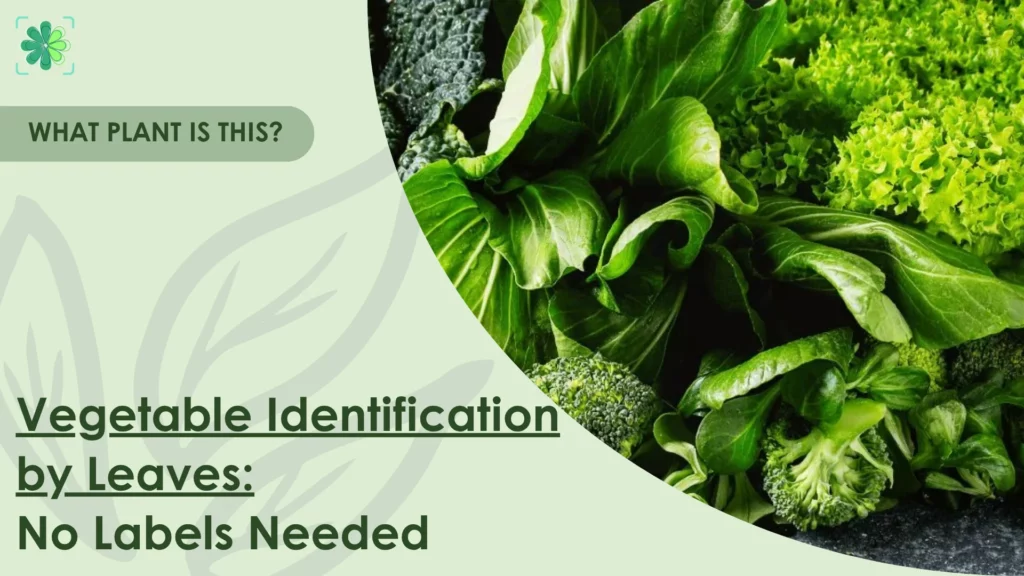
Vegetable identification by leaves is a handy skill when plant tags go missing or seedlings look alike. This article explains how to identify vegetables by examining their leaves closely, including shape, size, texture, and growth patterns.
You’ll see how to tell apart common plants like cucumbers, carrots, lettuce, and tomatoes just by their leaf features. It’s a simple guide for identifying what’s growing, even if you’ve lost the labels. Let’s get started!
25+ Vegetable Leaves You Can Recognize at a Glance
The five categories below help you match unknown plants with likely vegetables based on leaf shape, size, texture, growth habit, and even scent.
Large Leaves with Deep Lobes or Serrated Edges
These vegetables are typically vigorous growers, often vines or cool-season brassicas. Their large, showy leaves serve a dual purpose: absorbing sunlight efficiently and deterring pests with texture or size.
1. Pumpkin
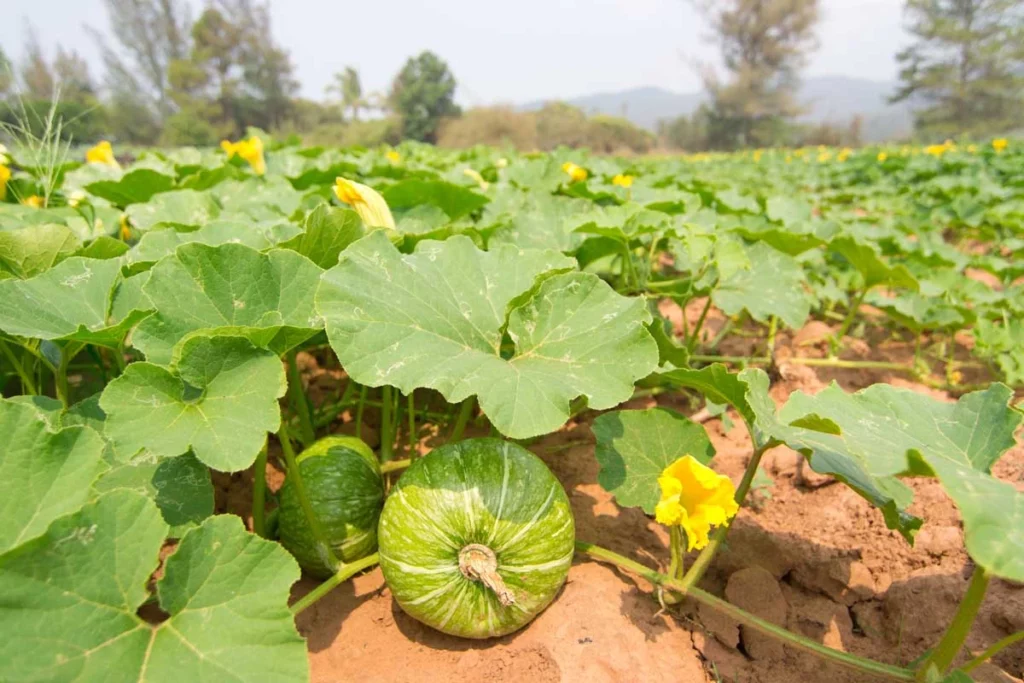
- Broad, heart-shaped leaves with 3–5 deep lobes
- Underside covered in coarse, bristly hairs
- Veins are pronounced and radiate from the center
- Typically grows on sprawling vines that need space
2. Squash
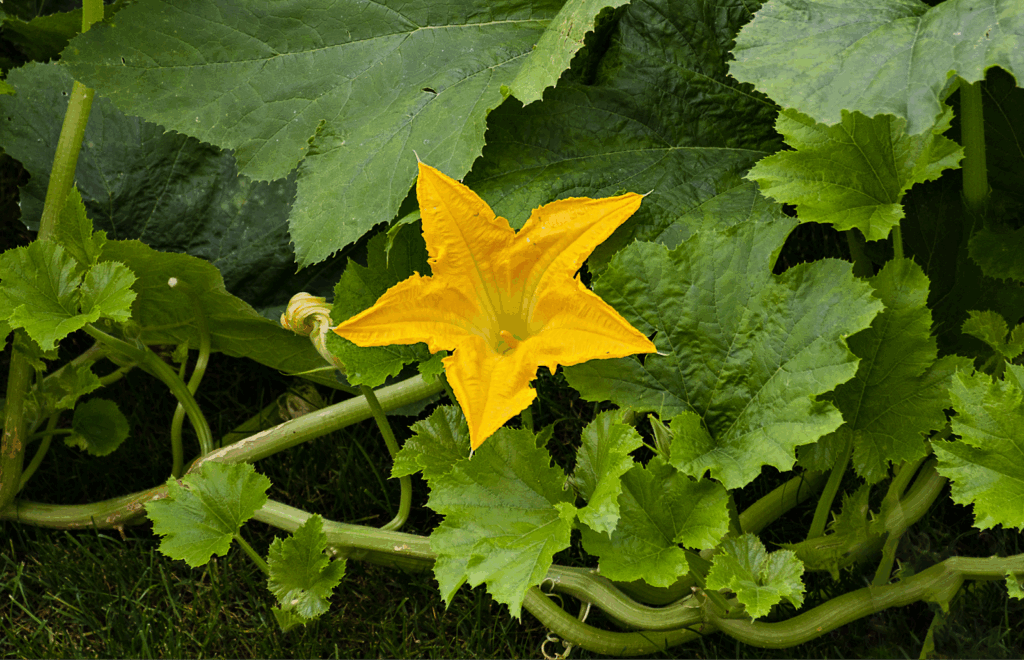
- Similar to pumpkin, but leaves may be less deeply lobed
- Surface has a rough, sandpaper-like feel
- Serrated margins, sometimes with lighter coloration along the veins
- Climbing or bush growth, depending on variety
3. Cucumber
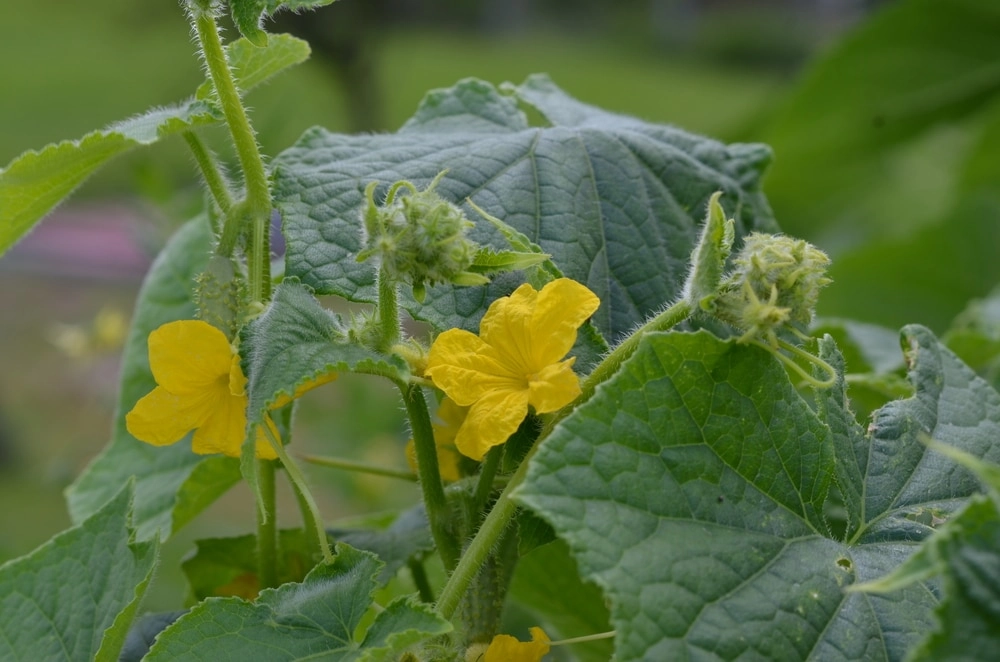
- Triangular to rounded leaves with a mild lobe
- Leaf surface feels abrasive or grainy to the touch
- Grows along vining stems with tendrils for climbing
- Often confused with squash, but has shallower lobes
4. Kale
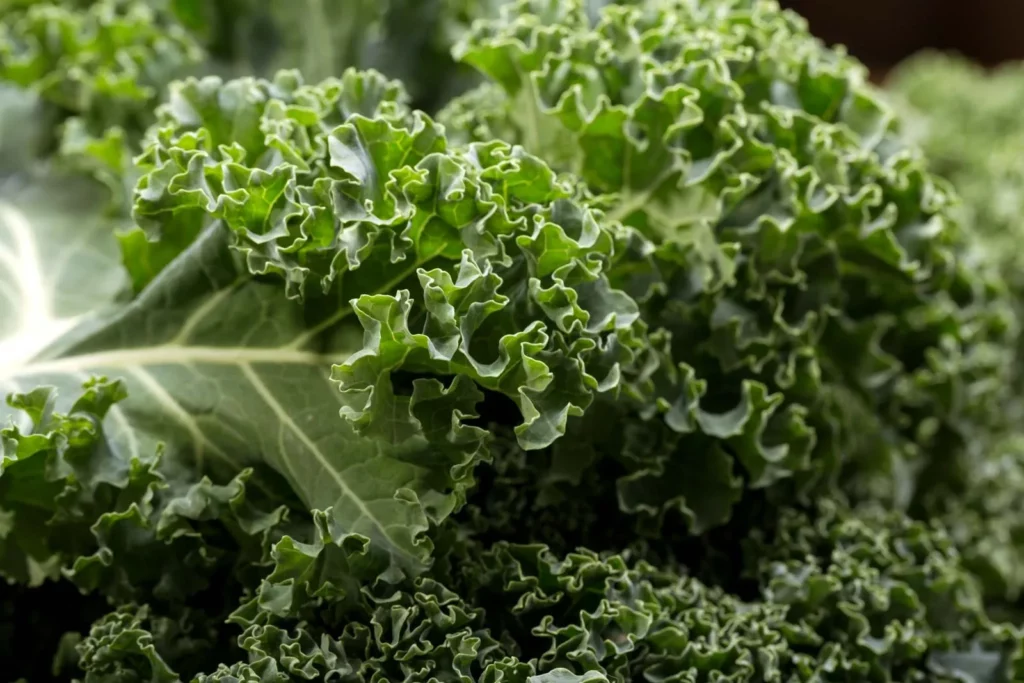
- Frilly or curled leaf edges; margins may be irregular or ruffled
- Thick, leathery texture with visible midrib
- Stands upright, forming a loose rosette or central stalk
- Bluish-green or dark green hues with occasional purple tones
5. Swiss Chard

- Large, spoon-shaped leaves with wavy or crumpled edges
- Distinctive colorful stems: white, red, or golden
- Leaves are soft yet structured with prominent veins
- Upright growth habit, often harvested from the outside in
6. Sweet Potato
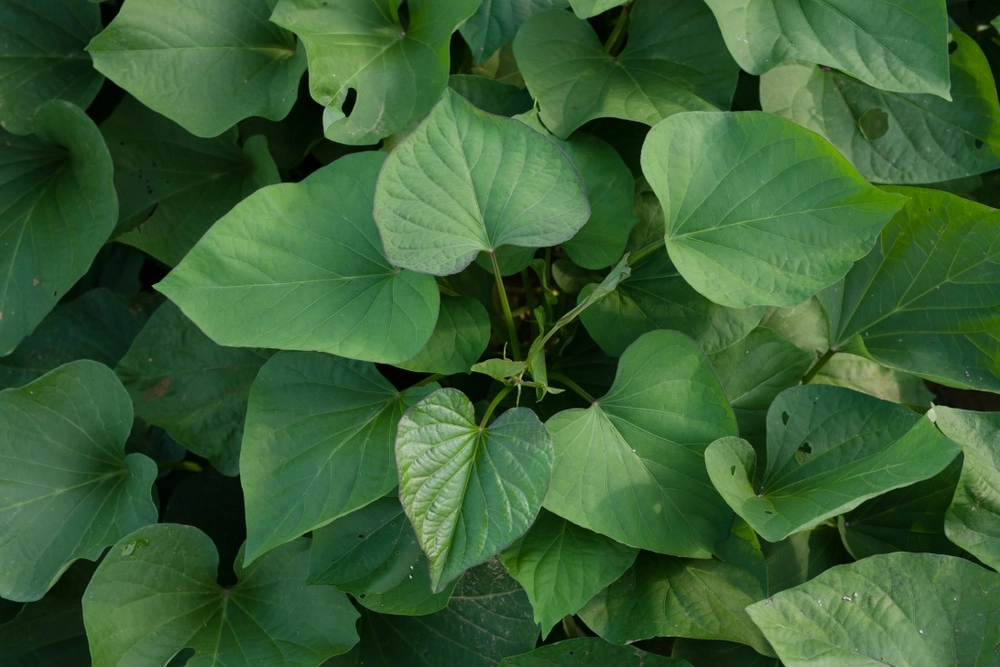
- Highly variable leaves: may be heart-shaped, lobed, or pointed
- Smooth surface, slightly glossy
- Trails along the ground with a dense, low canopy
- Leaf shape can vary even within the same plant
So, if you spot large, lobed leaves with rough textures spreading across your garden bed, you’re likely looking at vining crops, such as pumpkins or cucumbers. This early vegetable identification by leaves helps you plan proper spacing, add trellises, and avoid crowding as they grow.
Small to Medium Leaves with Toothed or Wavy Edges
This group includes both culinary herbs and fast-growing leafy greens. Their identification often hinges on finer traits like edge definition, scent, and leaf fuzz.
7. Tomato
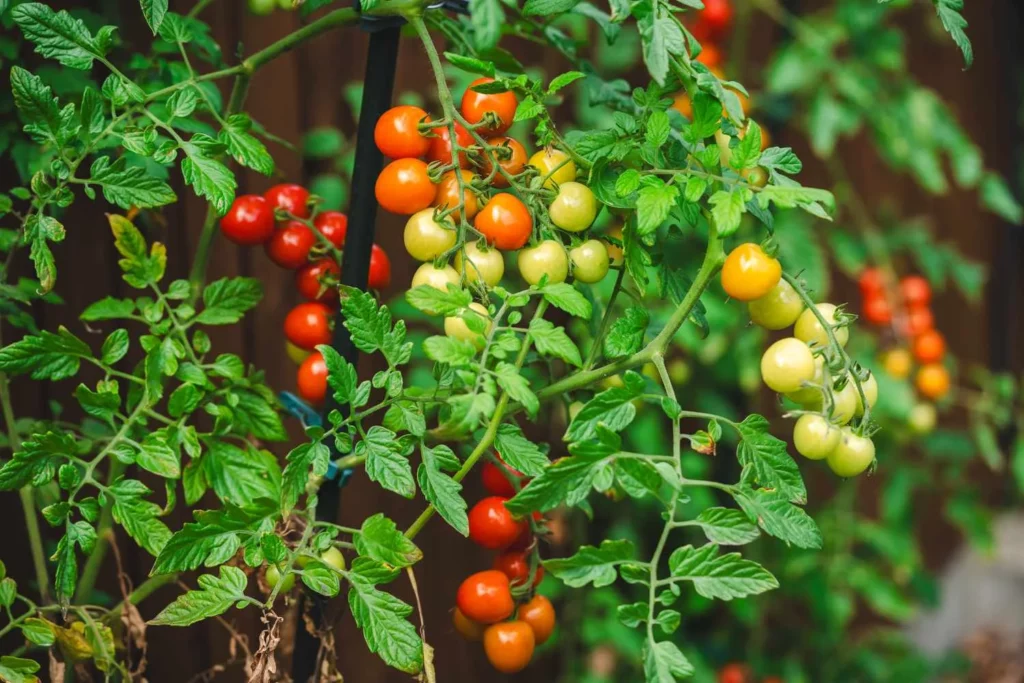
- Compound leaves with oval leaflets and serrated edges
- Fine hairs on both surfaces create a fuzzy texture
- Pungent, earthy scent when crushed
- Alternates along a thick, ridged central stem
8. Basil
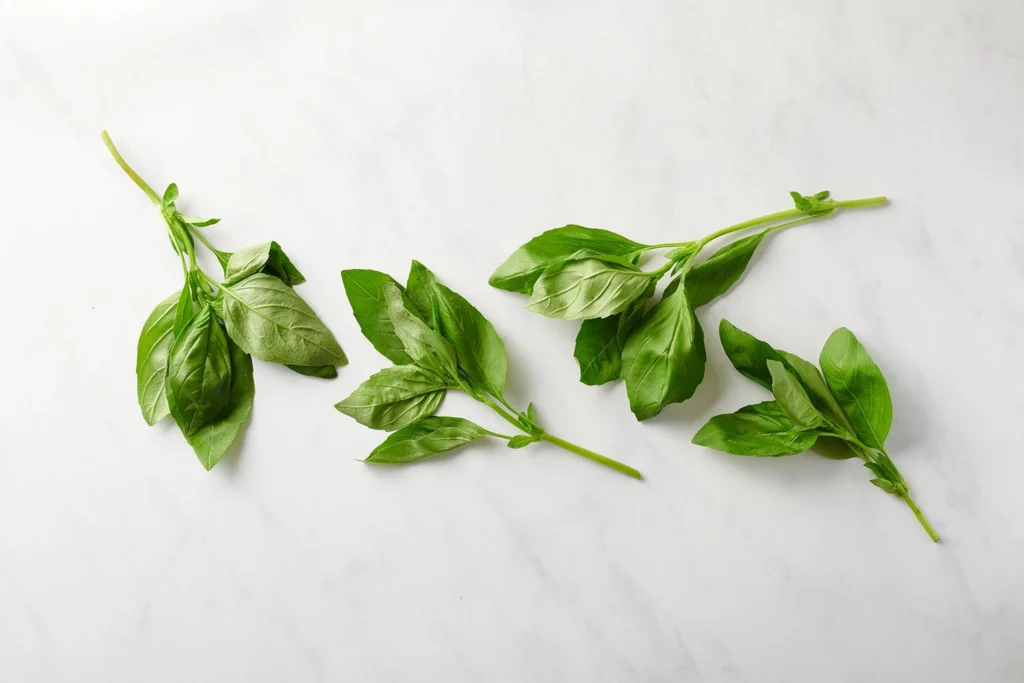
- Smooth, shiny, ovate leaves with soft, rounded edges
- Leaves grow in opposite pairs on square stems
- Sweet, clove-like aroma that’s instantly recognizable
- Leaf color ranges from bright green to deep purple (variety-dependent)
9. Cilantro
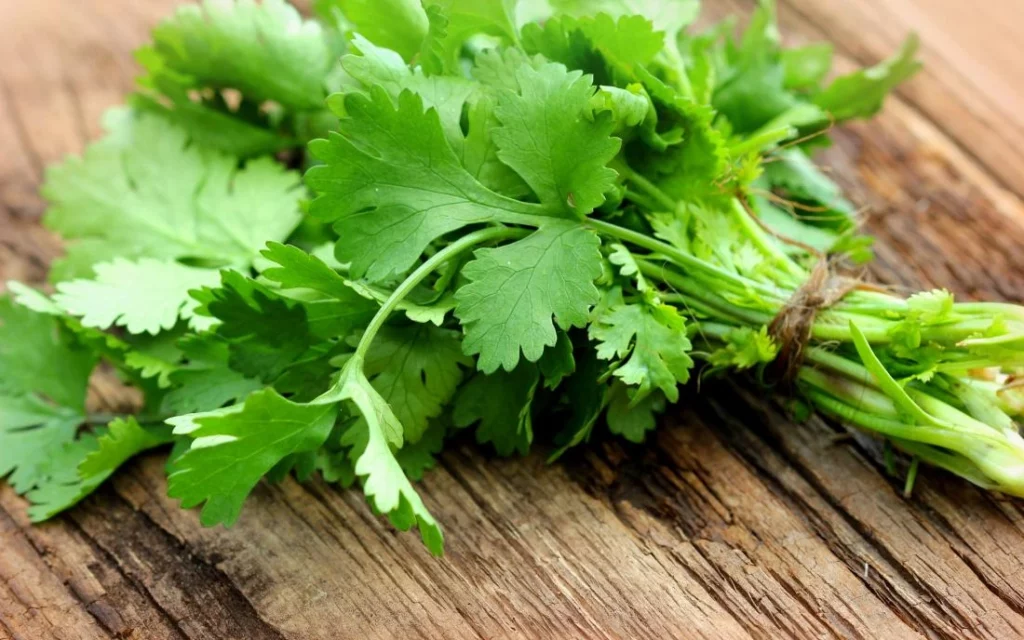
- Flat, divided leaves with rounded lobes; resembles carrot tops
- Thin stems and soft texture
- Citrus-like scent when handled
- Easily confused with parsley at early stages
10. Parsley
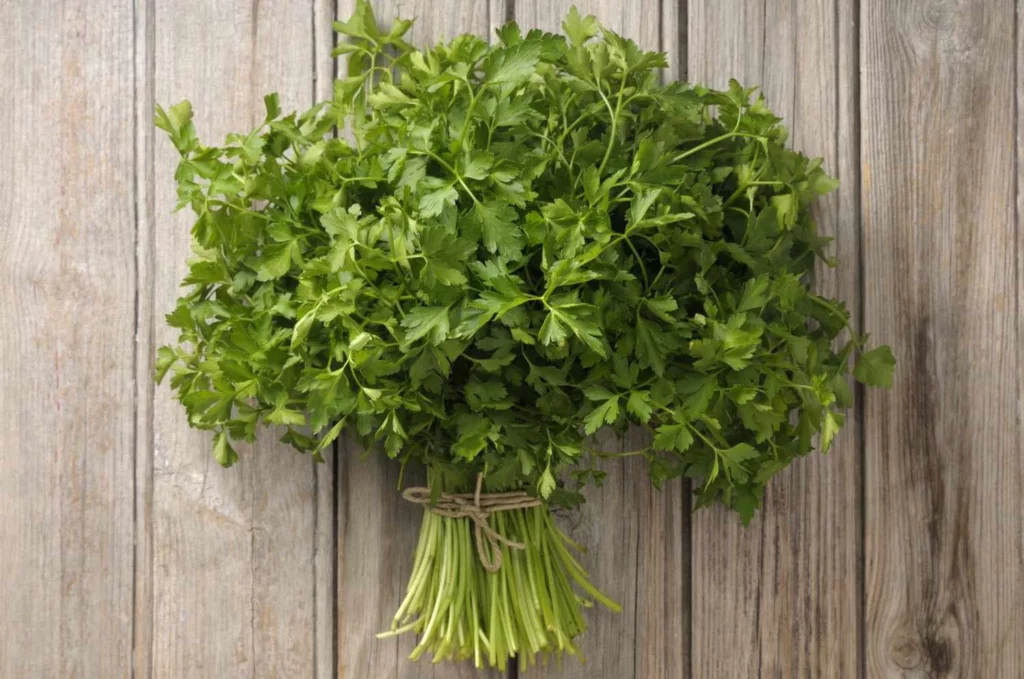
- Two types: flat-leaf (Italian) and curly
- Flat-leaf has jagged lobes and a smoother surface
- Curly type forms dense, ruffled clumps
- Mild, grassy aroma, less sharp than cilantro
11. Mint
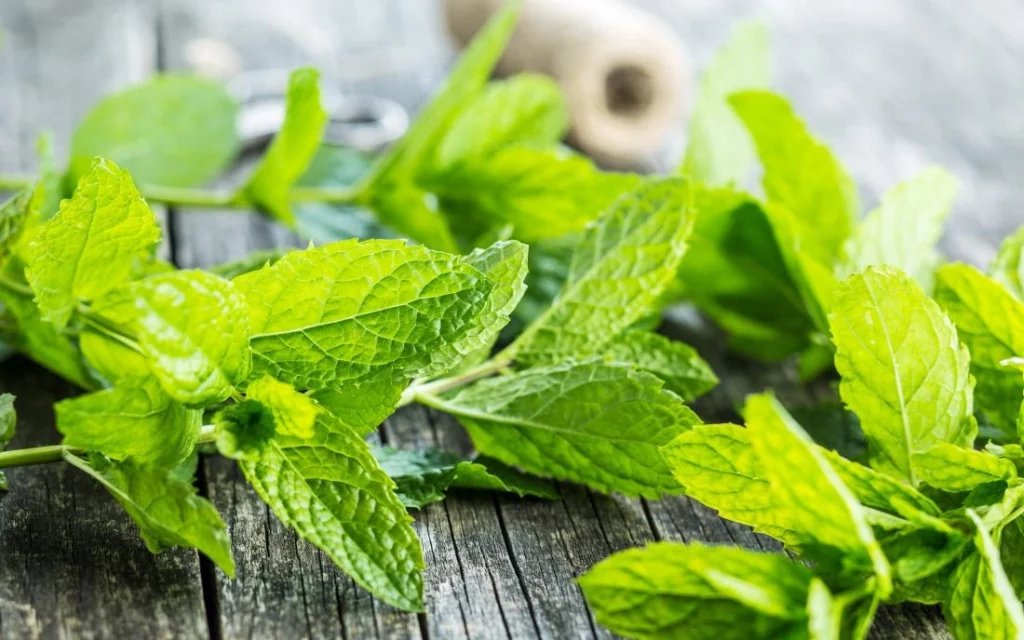
- Bright green, heavily veined leaves with toothed margins
- Fuzzy texture; square stems
- Powerful menthol scent
- Known for spreading aggressively by underground runners
12. Arugula
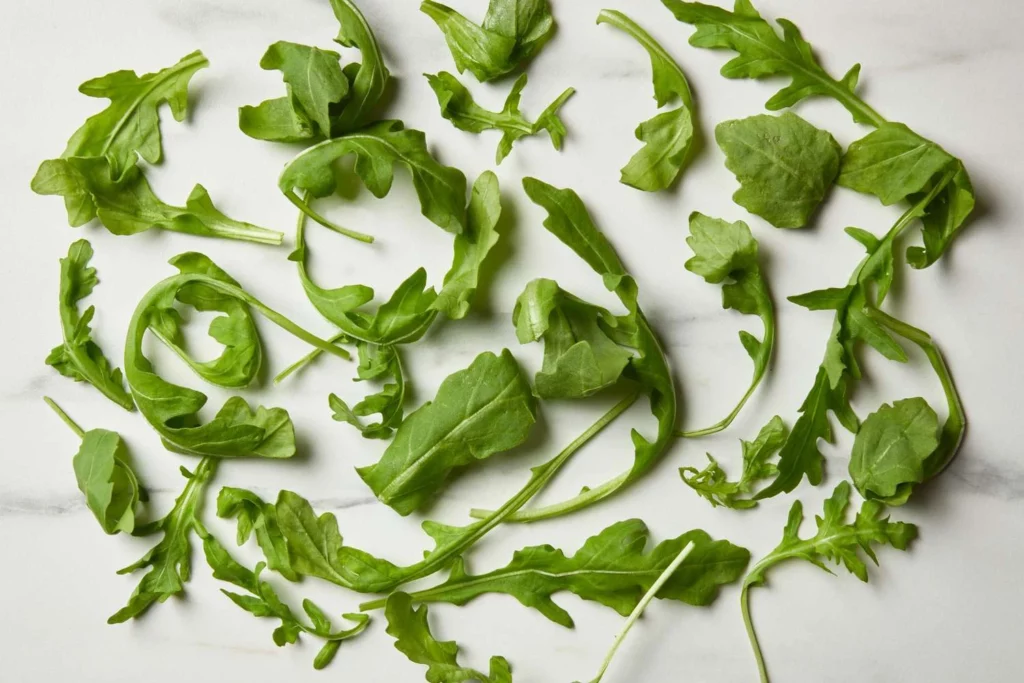
- Narrow, elongated leaves with irregular, deep lobes
- Slightly waxy surface with a tender bite
- Spicy, peppery aroma
- Grows in a loose, upright rosette
In this group, subtle details like scent and leaf edge shape play a key role in vegetable identification by leaves, especially when herbs like cilantro and parsley look nearly identical in their early stages.
Round, Smooth Leaves in Rosette Formation
These vegetables tend to form compact growth habits, with leaves spiraling from a central point. Texture and growth pattern are key indicators.
13. Lettuce

- Broad leaves, often soft and tender
- Leaf margin depends on type: romaine (elongated), butterhead (smooth), oakleaf (lobed)
- Forms a central rosette or head
- Pale midribs with thin, watery veins
14. Spinach
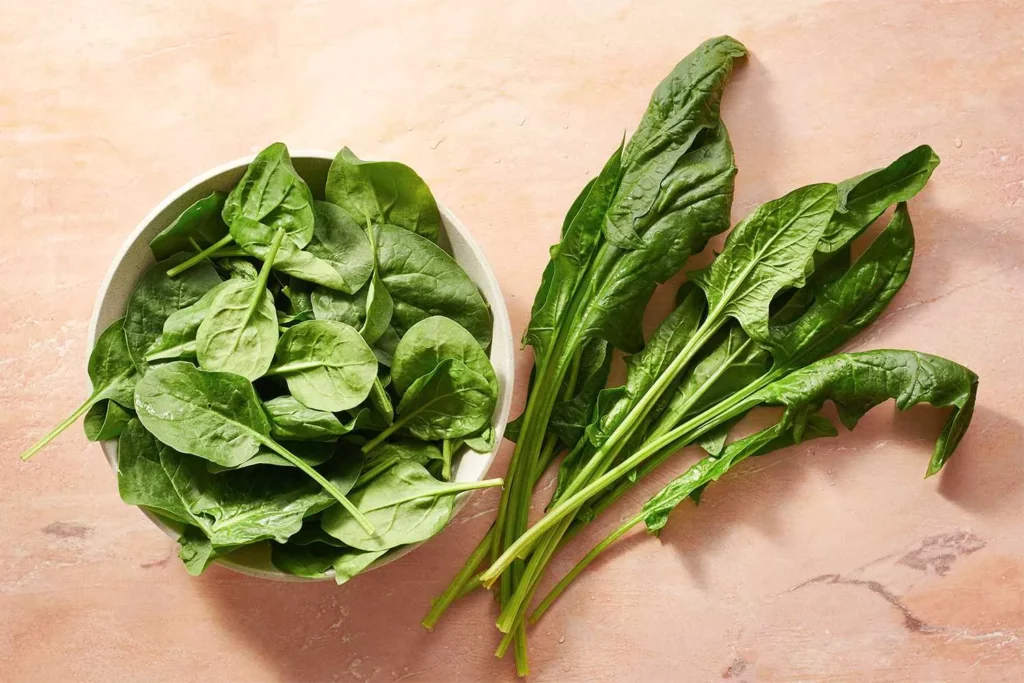
- Small to medium oval leaves with slight puckering
- Smooth to crinkled surface depending on variety
- Grows low to the ground in a tight cluster
- Leaves snap easily when fresh due to high water content
15. Cabbage
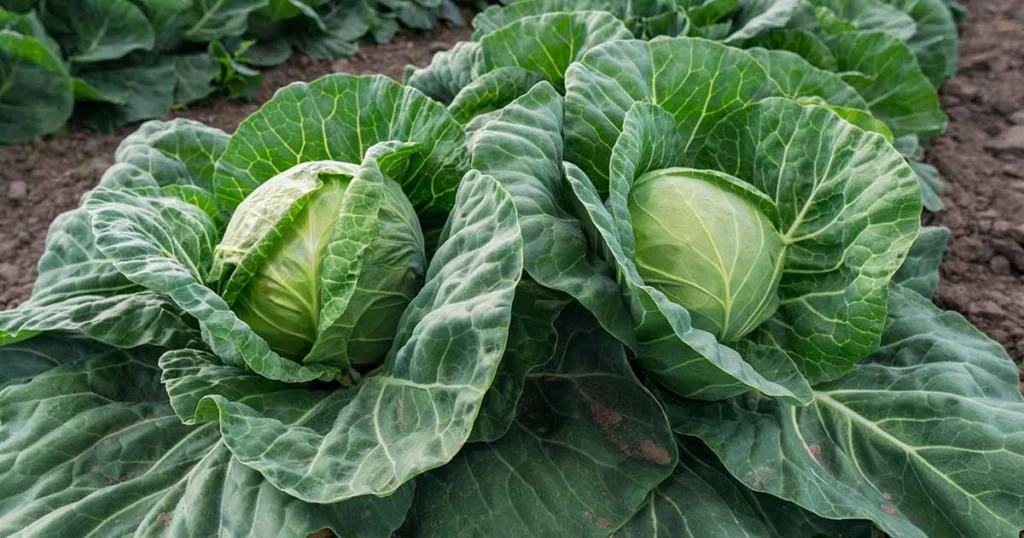
- Thick, tightly layered leaves that form a head
- Pale green to bluish-green, with a waxy surface
- Veins form a clear spiral pattern
- Outer leaves are broad and wrap inward during head formation
16. Bok Choy
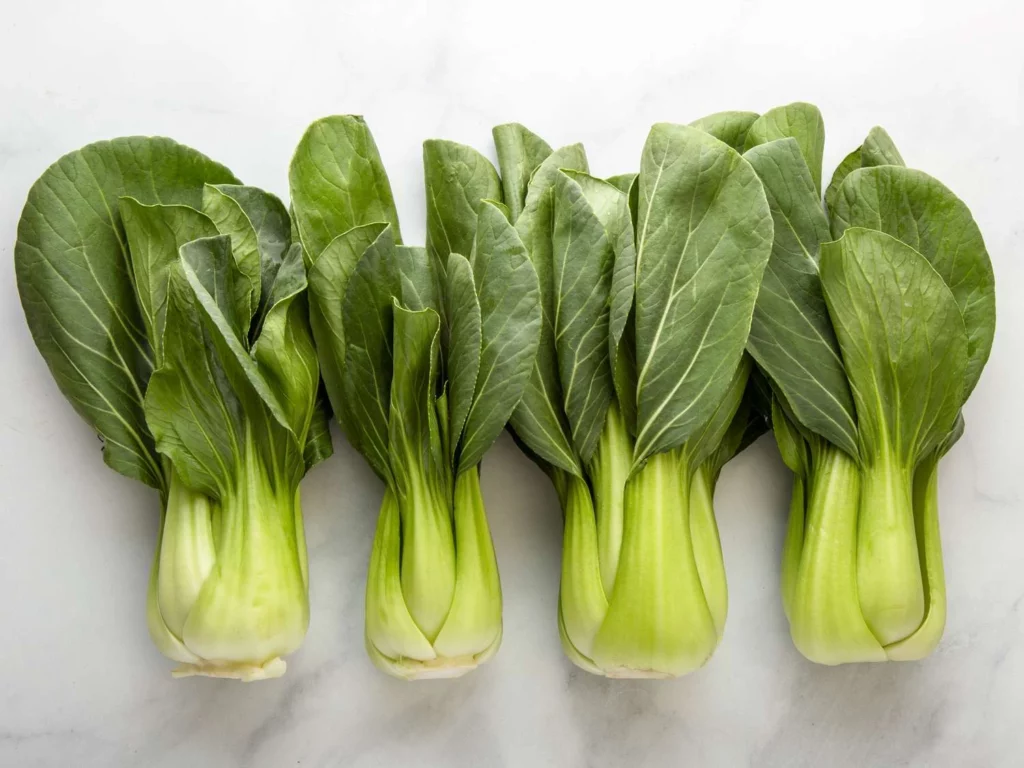
- Spoon-shaped leaves with smooth surface and thick, crunchy petioles
- Deep green blades with white midribs
- Upright growth; looks like an open rosette
- Related to cabbage, but doesn’t form a head
17. Beet
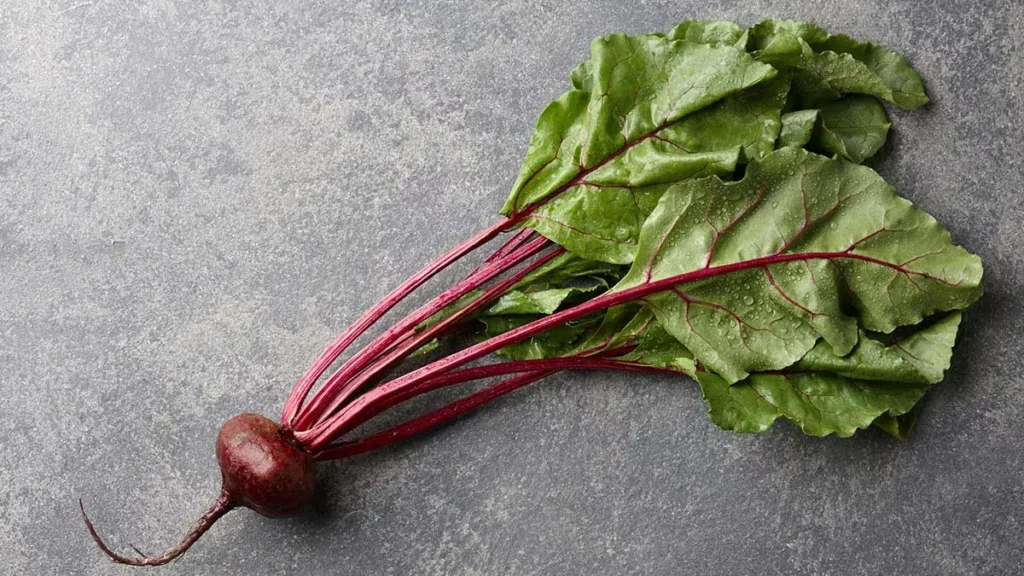
- Heart-shaped leaves with red or purple veins
- Slightly wavy edges with smooth texture
- Petioles (stems) are colorful and juicy
- Forms a leafy rosette above the root
To improve your vegetable identification by leaves, don’t just look at shape. Notice whether the plant forms a tight head, like cabbage, or spreads out in a loose rosette, like beet or spinach. This growth habit is often the clue that confirms what you’re really growing.
Long, Tube-Like or Grass-Like Leaves
These are monocots, meaning their leaves grow from a basal point and have parallel veins. They often resemble grass and are common in the allium family.
18. Scallion (Green Onion)
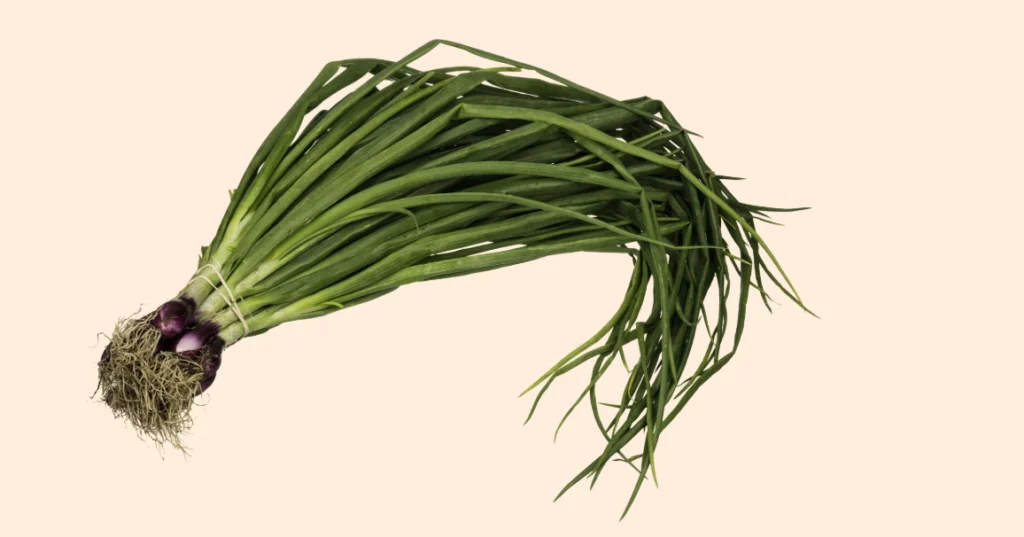
- Hollow, tubular leaves similar to an onion
- Smooth, waxy surface
- Grows upright from a small white base
- Mild onion scent; commonly used before bulb forms
19. Garlic Chives
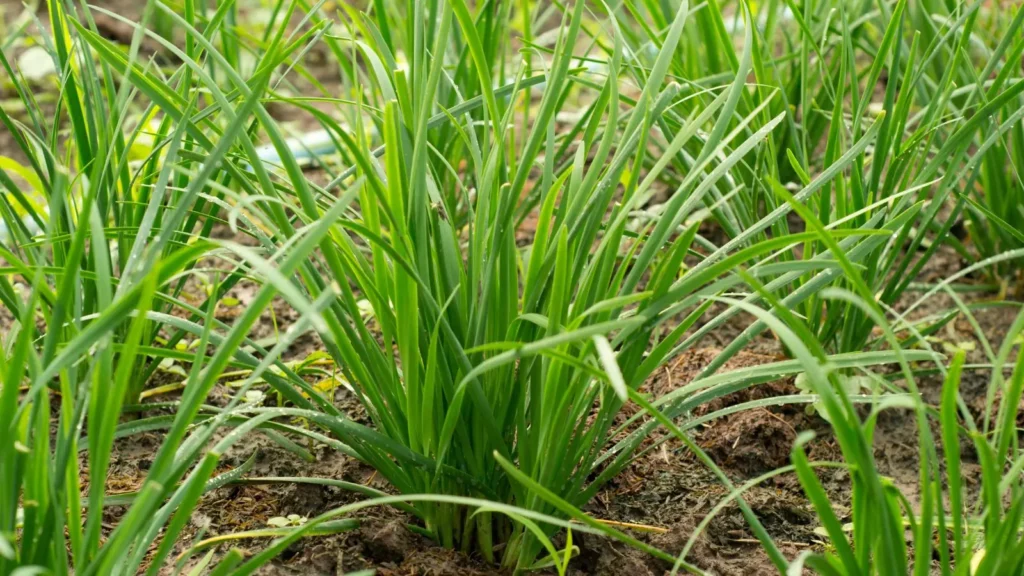
- Flat, strap-like leaves — solid, not hollow
- Softer and more flexible than onion
- Strong garlic scent when crushed
- Grows in dense clumps from underground bulbs
20. Leek
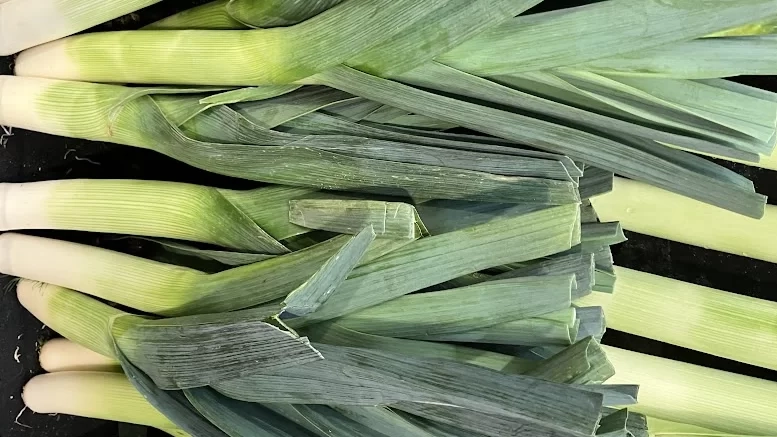
- Broad, flat leaves in overlapping layers
- Leaf base is pale and tightly packed
- Blue-green toward the tips
- Milder aroma than onion or garlic
In vegetable identification by leaves, long, upright leaves with a hollow or flat tube-like shape and parallel veins are strong indicators of allium crops like onion or garlic chives, especially when seedlings still look like simple grass.
Fine, Feathery, or Fern-Like Leaves
Often mistaken for herbs or even weeds, these vegetables share finely divided, soft foliage. Many are root crops, and their leaves tend to be light and airy.
21. Carrot
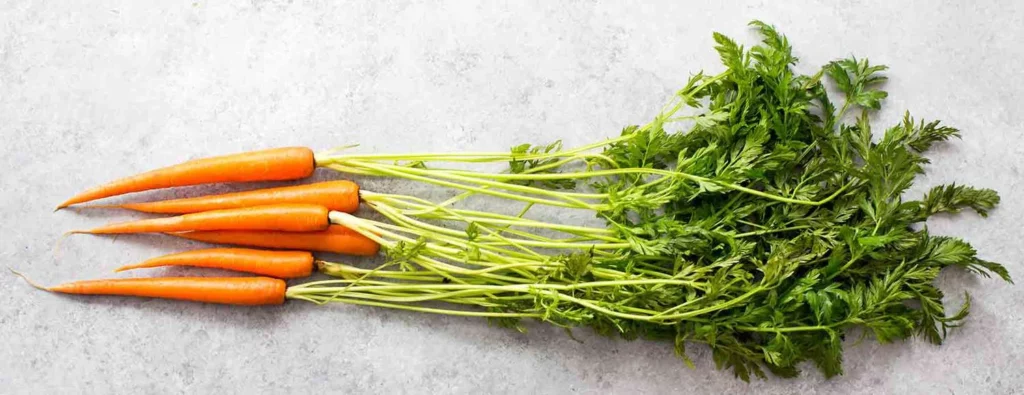
- Light green, fern-like leaves
- Soft, finely dissected with no strong scent
- Forms a feathery canopy above a single taproot
- Very similar in appearance to parsley or cilantro
22. Dill
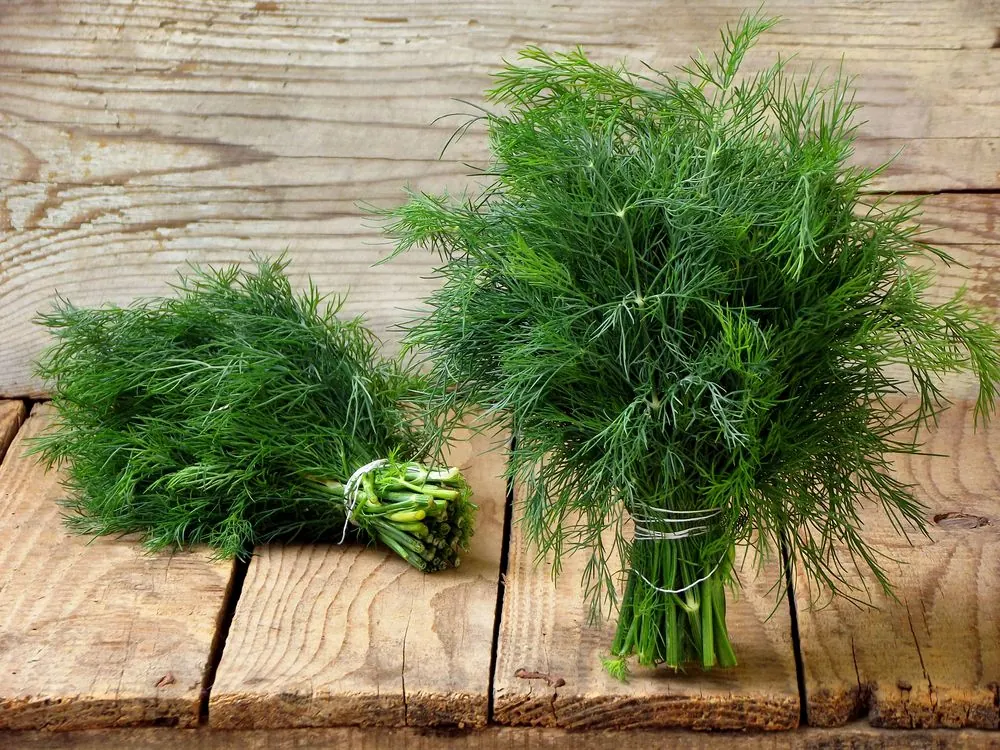
- Thread-thin, wispy leaves
- Bright green with a very distinct dill aroma
- Grows in a branching, bushy habit
- Flowers later form flat umbels with yellow blooms
23. Fennel
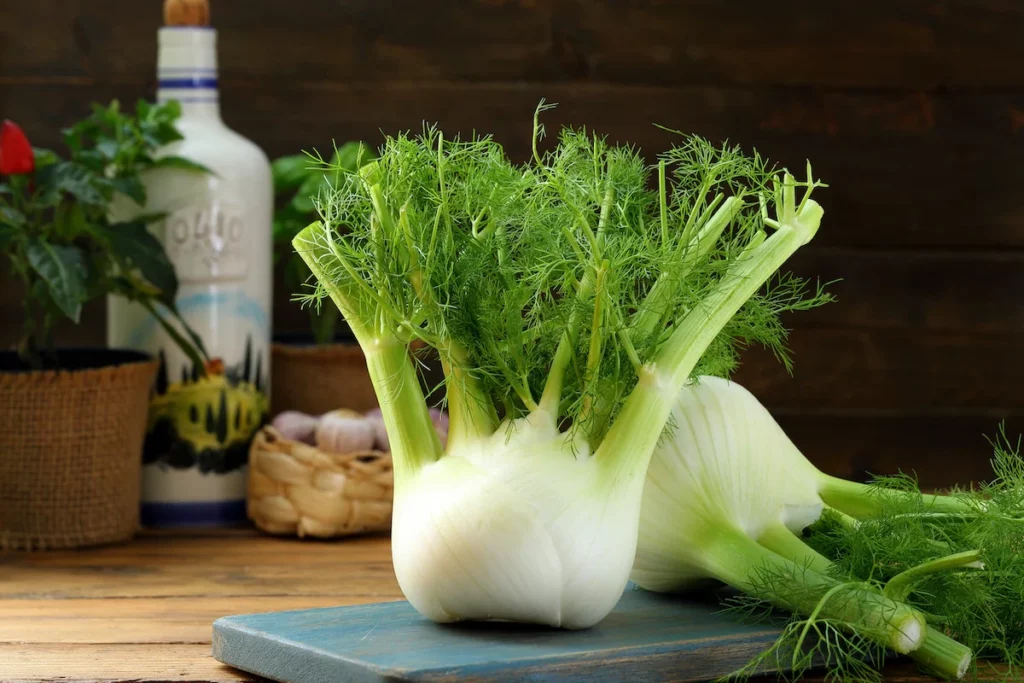
- Extremely fine, feathery leaves
- Anise-like scent that distinguishes it from dill
- Base of leaves wraps around a thick, bulbous stalk
- Taller and more upright than dill
24. Radish
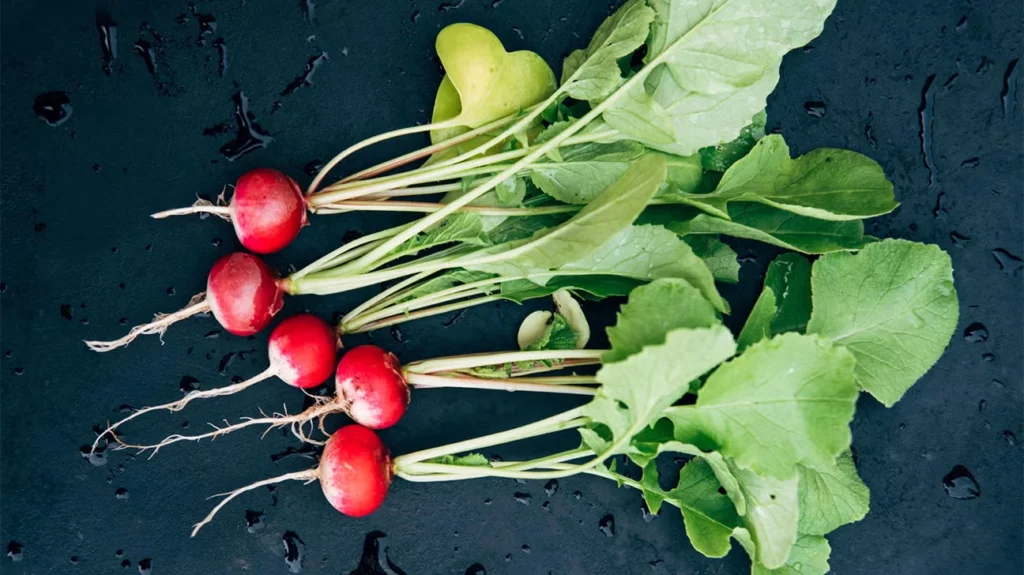
- Rough, hairy leaves with toothed or lobed margins
- Upright but floppy growth
- Leaves feel coarse and may irritate sensitive skin
- Often confused with weeds in early stages
25. Mustard Greens
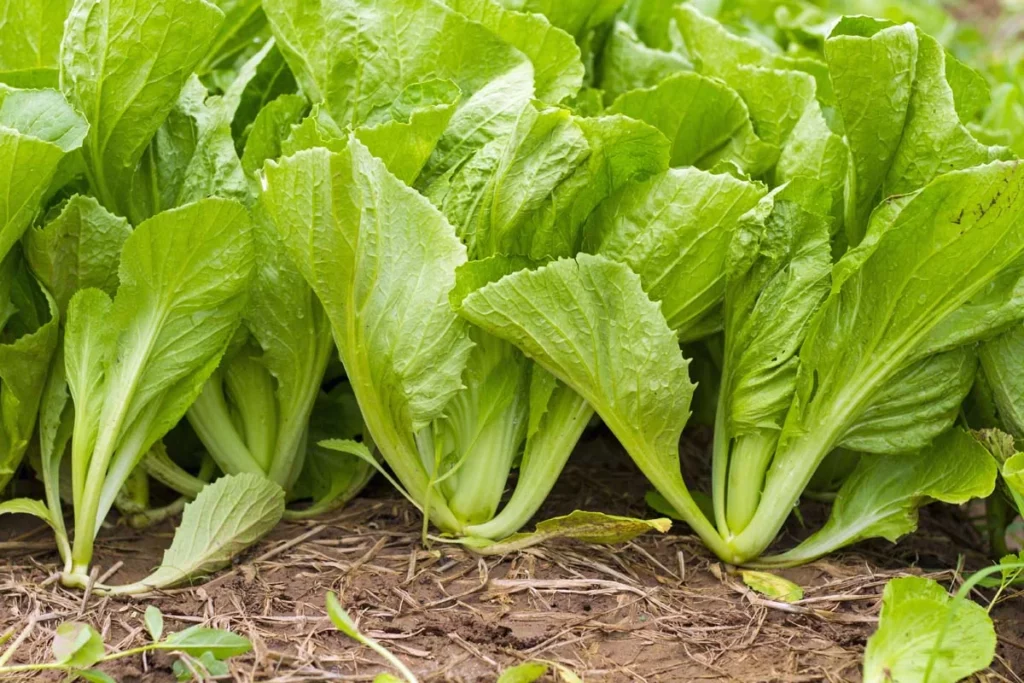
- Jagged or lobed edges
- Thin, soft surface with a slightly spicy taste
- Some varieties are smooth, while others are frilly
- Grows in a semi-upright clump
26. Broccoli
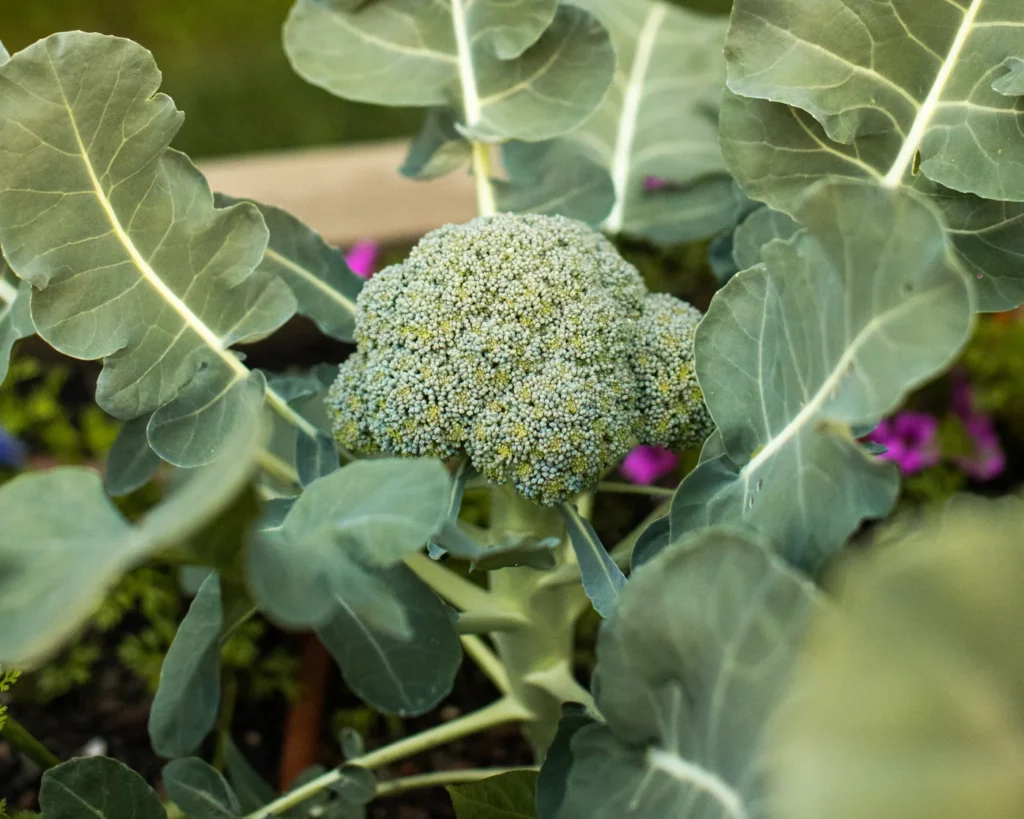
- Broad leaves with soft lobes and a heavy midrib
- Bluish-green coloring with a waxy surface
- Grows in a rosette with a central stalk forming the edible head
While these leaves may seem delicate at first glance, features like fine divisions, leaf hair, or distinctive aromas are what make vegetable identification by leaves reliable, particularly when telling apart spring root crops like carrot, dill, or radish from common garden weeds.
Seasonal and Regional Clues
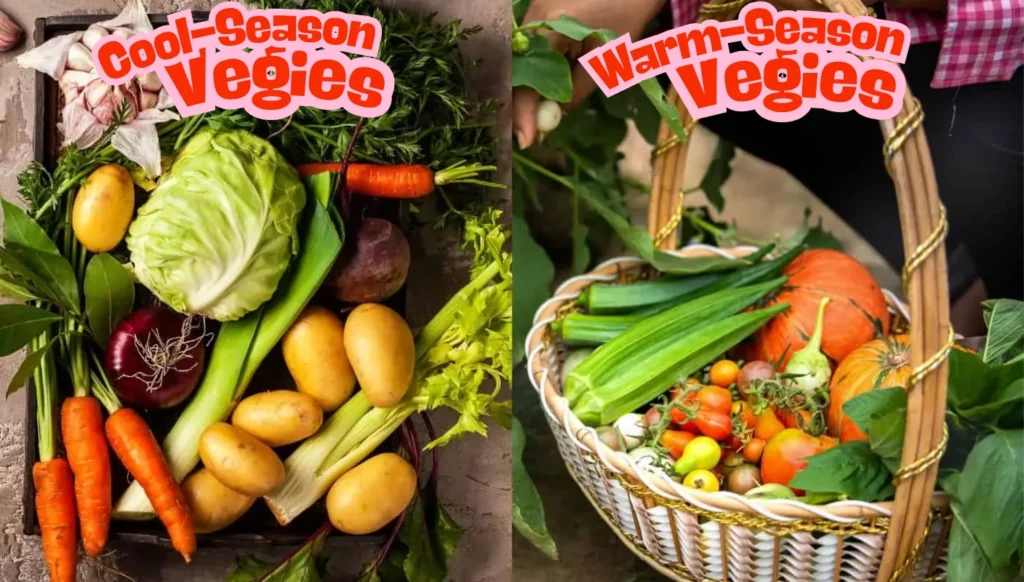
Cool-season vegetables, such as lettuce, spinach, carrots, and beets, are typically planted in early spring or late fall. Their leaves tend to be smaller, softer, and closer to the ground.
Warm-season vegetables, such as tomatoes, cucumbers, and squash, appear later in spring or early summer. These plants develop larger, thicker leaves and grow more aggressively once the weather heats up.
In early spring, most of what you’ll see are greens and root crops, not vining plants or fruiting vegetables. Keeping this in mind makes vegetable identification by leaves easier and more accurate, especially when seedlings still look similar.
Tips to Avoid Mistakes
1. Use pencil on plastic tags – It won’t fade like marker when exposed to sun or rain.
2. Color-code your markers – Try blue for spring crops, red for summer, so you spot mix-ups fast.
3. Plant by group, not scattered – Keep similar crops in rows or blocks to make ID easier.
4. Wait for true leaves to appear – Cotyledons often look identical across different plants.
5. Grow labeled backup seedlings – Use them as a reference when you’re unsure in the garden.
Conclusion
Hope this detailed guide will help you master vegetable identification by leaves, especially when seedlings all look the same. Paying attention to leaf size, edges, and structure can save you time and prevent mistakes. And if you’re ever unsure, open the Planteyes app and snap a quick photo.
FAQs
How can I identify vegetables just by looking at their leaves?
Look at the leaf shape, edge (smooth, toothed, or lobed), texture (fuzzy, smooth, waxy), and arrangement on the stem. For example, carrot leaves are fine and feathery, while cucumber leaves are large and rough with shallow lobes.
What are the key differences between vegetable leaves and weed leaves?
Vegetable leaves usually grow in organized patterns (rows or clusters), have consistent shapes, and often show known traits like scent or fuzz. Weeds often grow irregularly, may spread quickly, and their leaves may look overly thin, wiry, or spiky with no strong scent.
Which vegetables have similar-looking leaves at the seedling stage?
Many seedlings start with cotyledons that look nearly identical, such as tomato, pepper, and eggplant. Also, carrot, parsley, and cilantro all have delicate, fern-like leaves early on and are easy to confuse without checking scent or stem pattern.
Are there free apps that help identify vegetables by their leaves?
Yes. Apps like PlantNet, Planteyes, and PictureThis let you snap a photo of the leaf and compare it to a database of vegetable species. They’re especially helpful when cotyledons and true leaves start to appear.
What should I do if I can’t tell what’s growing in my garden?
Wait until the true leaves appear, compare with reference seedlings, or use a plant ID app. You can also take a photo and ask in gardening communities or plant forums for help. Avoid pulling it out unless you’re sure it’s a weed.


